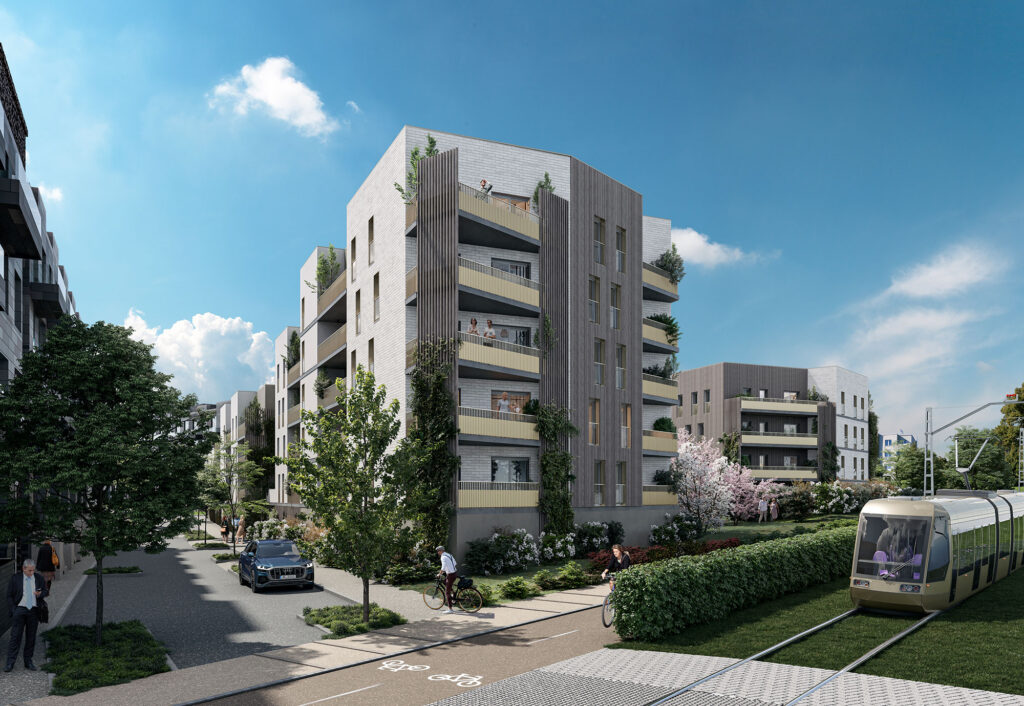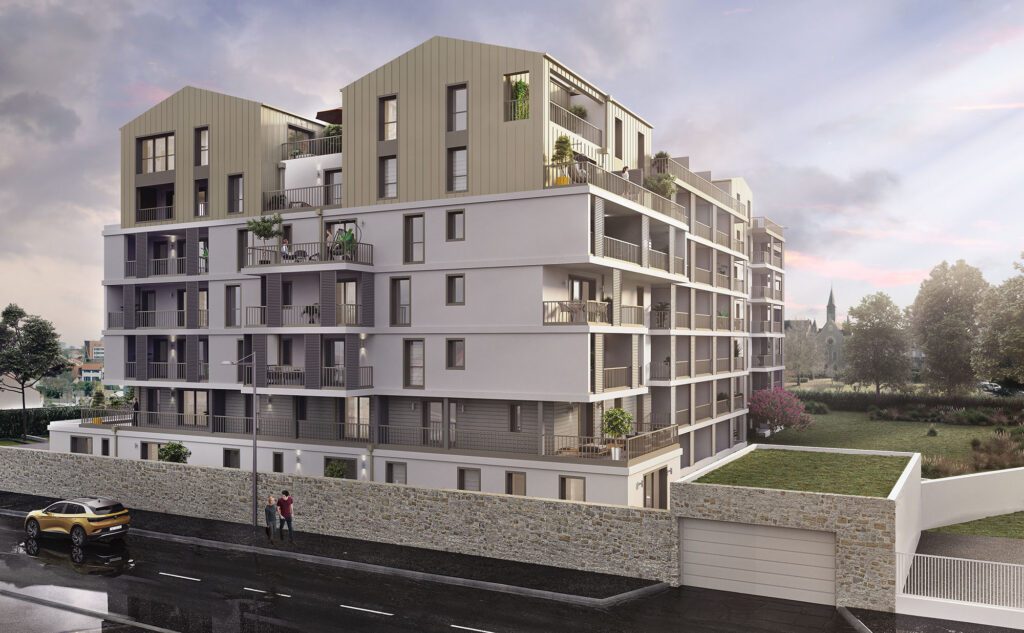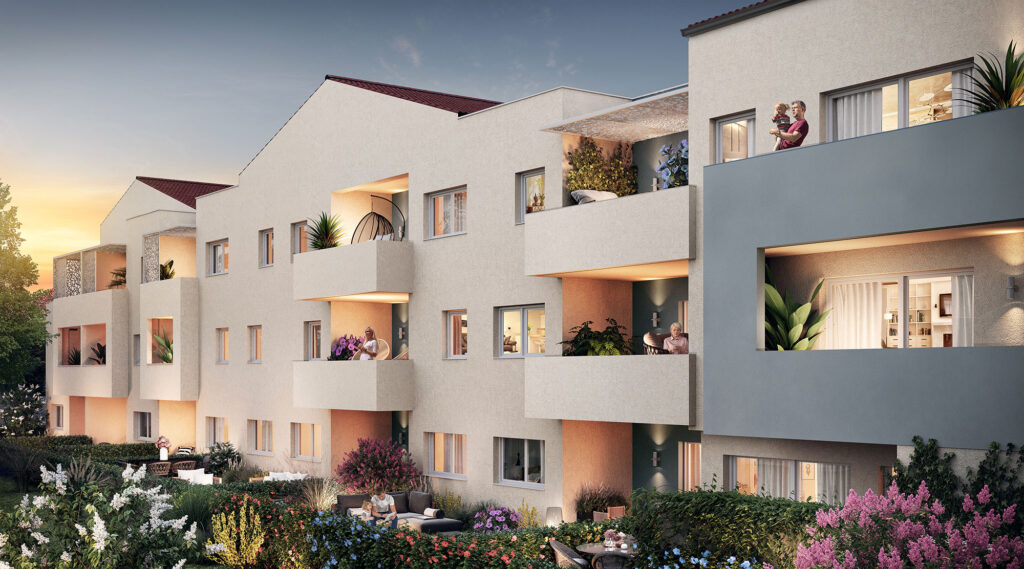The success of real estate projects depends on effective, efficient real estate marketing. This means better anticipation of customer needs, faster marketing of real estate projects, and increased brand awareness and productivity. All this is made possible by 3D. That's why 3D modeling is the future of real estate marketing. Discover the many possibilities offered by this technology in real estate marketing.
Real estate marketing and 3D: better anticipation of customer needs
3D technology is an excellent tool for anticipating customers' evolving needs. Customers are constantly looking for accessibility, transparency, sustainability and a personalized experience.
Accessibility
Previously, buyers had to make several property visits before making their final choice. In today's digital age, however, they are more likely to conduct online searches beforehand, filtering options to save time. It is therefore crucial to give prospects the opportunity to easily understand the real estate project to facilitate their research. 3D technology is one way of achieving this, by making your real estate projects more accessible.
Among these 3D technologies, the real estate virtual tour represents the future of real estate marketing. It's a 3D projection of an existing property or one under construction, with interactive features. Visitors can view every room in the property from different angles, without having to visit the property itself. They can access the property at any time via computer, smartphone or tablet.
Buyers are increasingly aware of the need for accessibility. That's why it's a good idea to integrate 3D visuals into your various distribution channels: email marketing, website, social media, etc.

Transparency
Every day, Internet users are inundated with thousands of real estate ads. Being wary of the reliability of these ads, they are increasingly selective. To reassure them, real estate developers are adopting 3D visuals in their real estate marketing strategy because of the realism they offer. For example, a 3D floor plan allows the customer to grasp volumes, understand room layouts and furniture layouts. A 3D model can also contain important information about the property, such as dimensions and lots still available.
Durability
A BIM model is a graphic representation of a real estate project that enables its energy efficiency to be simulated even before construction. Obtained from 3D modeling, it provides technical information about the property. With the growing concern for sustainable development in the real estate sector, developers are using it to create more sustainable, less polluting real estate projects. What's more, integrating the ecological aspect into a real estate project makes it a good sales argument for attracting more customers.
Personalized experience
In marketing, and particularly in real estate, customers are increasingly looking for personalized experiences. 3D modeling responds to this need, enabling customers to discover for themselves the different aspects of a real estate project and tomake modifications. Although this last option is not yet widely used in real estate, it could truly transform real estate marketing.
In future, customers will be able to make any changes they wish in real time:
- Remove a wall ;
- Changing wall colors;
- Replacing decorative elements ;
- Moving furniture.
Real estate marketing and 3D: influencing buyer behaviour
3D not only responds to new customer needs, but also influences their behavior.
Greater commitment
3D is the future of real estate marketing, as it enhances customer engagement. In a sector as saturated as real estate, buyers are looking for original, engaging experiences. 3D visuals are one way of getting them more involved in their decision-making process. Realistic 3D renderings and virtual tours create a strong bond between buyer and property. You can also opt for 3D animations to arouse the emotions of your target audience.
What's more, immersive technologies like VR and AR are starting to be gradually adopted in real estate development, as they strongly engage prospects. We can imagine the possibility of visiting the land on which the house will be built, while visualizing the future property via a screen.
An interactive experience encourages your prospects to take a longer look at your property. This not only facilitates the marketing of your real estate project, but also improves your positioning on the web.
Rapid decision-making
The adoption of 3D in real estate marketing helps customers to make decisions more quickly. Realistic 3D rendering enables maximum detail to be visualized, such as the materials used for flooring or walls. It also helps customers to imagine different layout options, eliminating doubts and uncertainties. Thanks to immersive marketing, potential customers can easily project themselves into their future property. Quick decision-making facilitates real estate transactions.
Attention to detail
The gradual introduction of 3D in various fields is driving consumers to pay greater attention to detail. Even for 3D projections, they demand maximum realism and quality. It is therefore advisable to produce very high-resolution 3D renderings to highlight the details of your real estate project.
Real estate marketing and 3D: competitive differentiation
Standing out from the competition is an essential element in marketing, if not the most important. 3D is just such a tool, enhancing your brand image and building customer loyalty.

Better brand image
Integrating 3D into your marketing materials helps improve your brand image in a number of ways:
- Creating a memorable experience: the virtual real estate tour offers an immersive experience that leaves a lasting impression on the visitor's mind.
- Responding to customer needs: 3D modeling promotes communication and understanding. This enables you to better meet their expectations and requirements.
- Customer satisfaction: a faithful, realistic 3D representation of a real estate project boosts customer confidence.
Customer loyalty
A memorable and satisfying experience builds customer loyalty. But to stay on top of customer needs, the marketing team must constantly monitor the market. To facilitate this task, you can link the 3D model to a CRM. The resulting data can be used to improve customer relationship management and save time for the marketing team.
Real estate marketing and 3D: reducing marketing costs
A specific budget is usually allocated to real estate marketing in order to reach a large audience. Thanks to their versatility, 3D tools can be used in many different situations. This means you don't have to invest in additional visuals for your marketing materials.
Indeed, in addition to marketing, 3D visuals can be used in other situations, such as :
- Urban planning: 3D projection is the best way to visualize large-scale projects such as residential areas. It allows you to assess their impact on the urban environment.
- Architectural design: the creation of 3D building models helps to detect any design errors.
- Property appraisal: 3D projection lets you examine property features and finishes in detail. This facilitates costing and budget management.
- Presentation of construction projects: 3D visuals (architectural plans, orbital models, 3D animations) can be presented to builders and investors alike, to facilitate their understanding.
- Renovation and refurbishment: 3D modeling of a property enables you to better plan interior and exterior modifications.
3D real estate projects
CTA








